
6 templates for increasing team collaboration
Reading time: about 6 min
Topics:
Team collaboration is more important than ever before. With different team members and departments working together online and in-office, communication makes all the difference. If your organization’s goal is more effective collaboration, consider this: use a proven collaboration template to get everyone on the same page from the onset.
Why? A collaboration template can quickly boost your team’s ability to stay aligned to a process, convey information, connect silos, and come up with fresh new solutions.
Lucidspark offers a collaboration template for every situation imaginable. With the right collaboration template, team members gain a shared vocabulary and discover dynamic ways to inform each other’s work. Now, let’s explore six templates for team collaboration.
Brainstorming templates
When it comes to encouraging team collaboration and solving difficult problems, there’s nothing quite as beneficial to idea generation as a brainstorm. But what makes this first collaboration template so different is its overall approach to the brainstorming process.
It’s called brainwriting. A common variation is called 6-3-5 brainwriting since it involves six participants writing down three ideas in five minutes. Typically, brainwriting involves the use of sticky notes that are passed to one another for adding more ideas each time.
Brainwriting can be a particularly effective collaboration technique for the times when:
- You require team collaboration in real time but in a structured manner
- You hope to inspire more original thinking, as writing helps prompt creativity
- You want introverted team members to feel more comfortable sharing ideas
For effective collaboration using Lucidspark brainwriting template, follow these steps:
- Add each participant’s name to the column headings. Invite them to the board.
- Explain the topic/problem and set a 5-minute timer to kick off the first round
- After 5 minutes, tell participants to move their ideas to the person on their right.
- Start the timer again and ask participants to add their ideas to the sticky notes.
- Repeat Step 4. After the session, review the ideas, and discuss them with the team. Use the sort and vote features to decide which ideas are most beneficial.
Ready to try out Lucidspark’s brainwriting template?
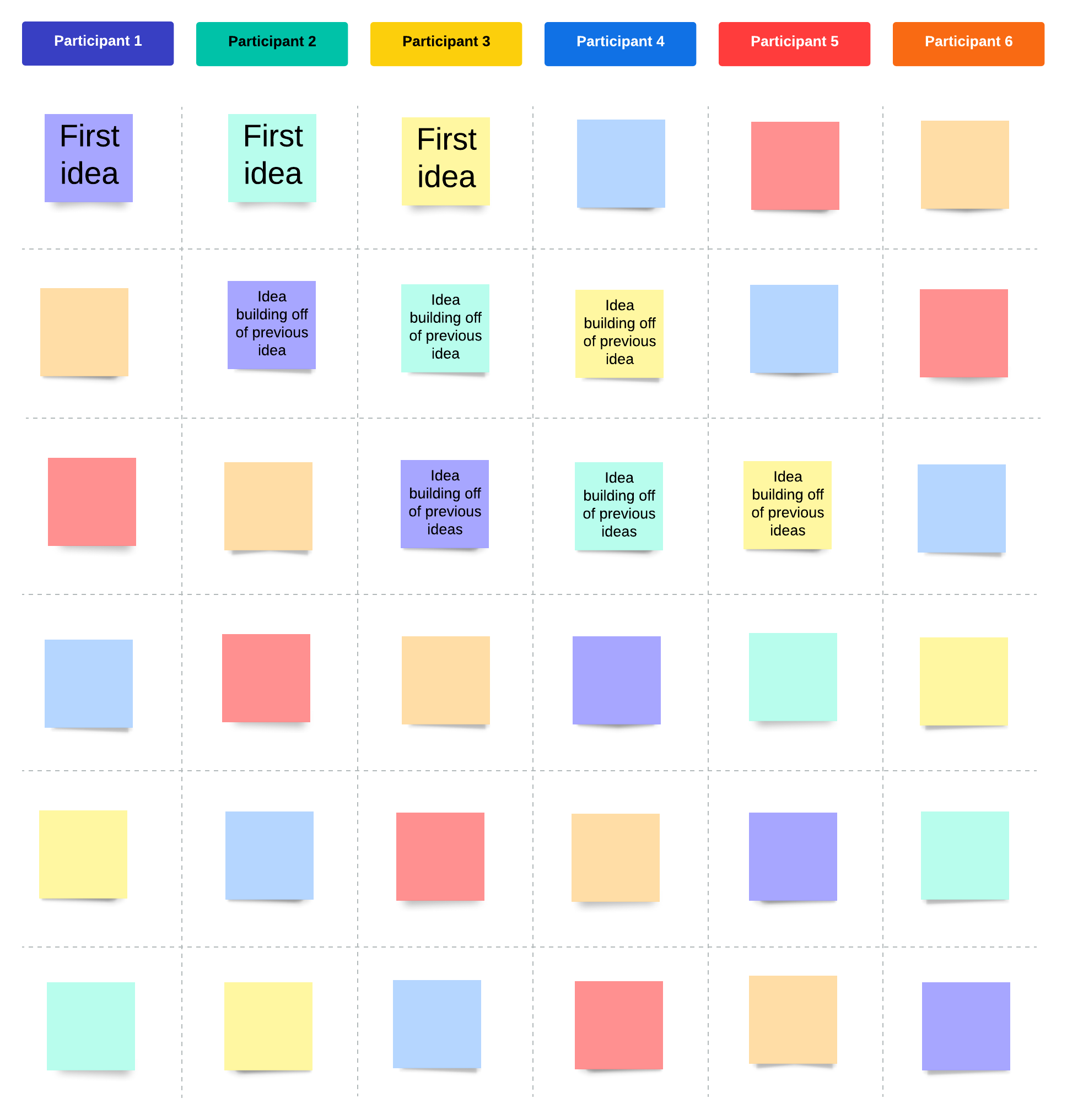
Another brainstorming template designed to foster team collaboration utilizes reverse brainstorming, a problem-solving strategy that looks at causes and impact before identifying solutions.
Reverse brainstorming is an ideal brainstorming technique for times when you’d like to:
- Come up with innovative solutions your team may never otherwise think about
- Reveal any hidden problems and issues that may affect your project’s success
- Get everyone more engaged in the process and look beyond obvious solutions
Using this technique begins with a question. Think of the problem you’re trying to solve. If your team needs to brainstorm ways to reduce the carbon footprint of your business, list all the ways your carbon footprint could increase. Gather ideas, then reverse them.
For example, if a reverse idea reveals how adding customers to the area where 24-hour shipping is offered by your company increases waste, reevaluate your 24-hour shipping.
Lucidspark’s reverse brainstorming template breaks it all down in 5 steps:
- Define the problem
- Reverse the problem
- Collect the ideas
- Reverse the ideas
- Identify solutions
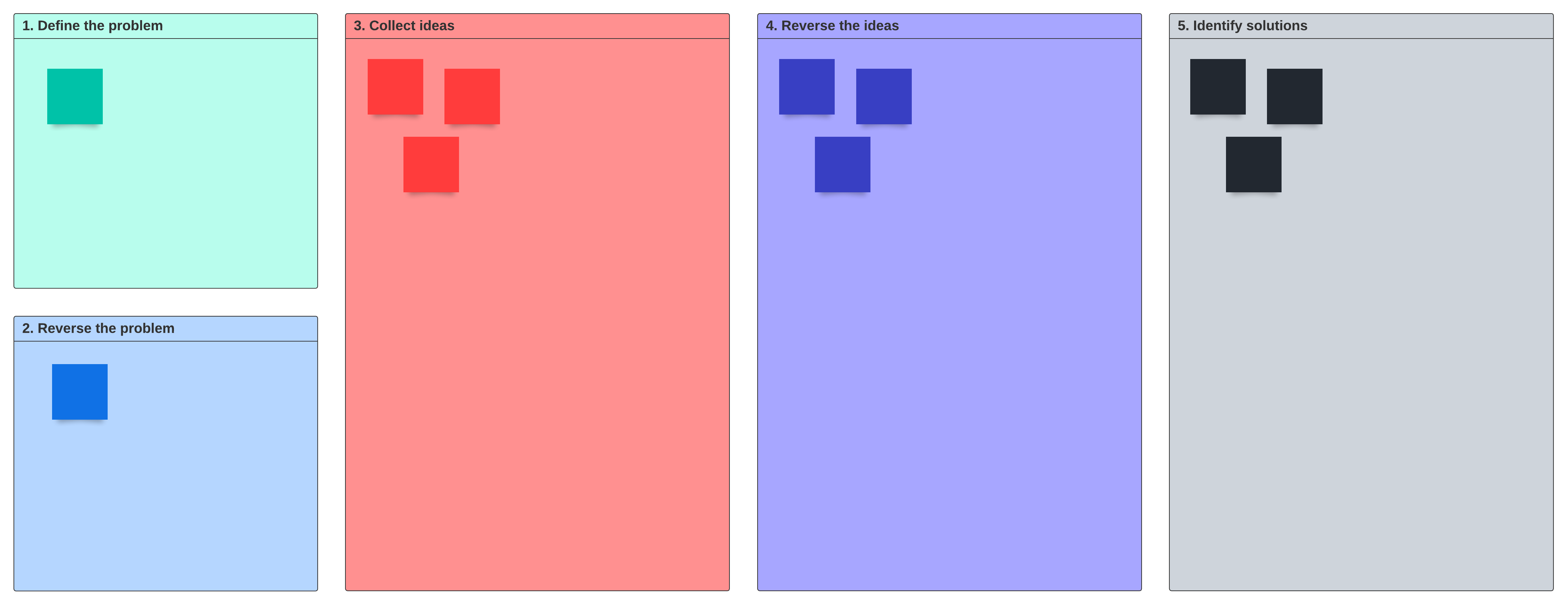
Because of its online format, your team can participate in the reverse brainstorm session in real time or reference the board later to make adjustments or add on more new ideas.
Meeting templates
Effective collaboration begins with a successful meeting. And a critical aspect of team collaboration is familiarizing everyone with one another and getting them comfortable working together. This can be a challenge for hybrid teams bringing on new employees.
A quick share icebreaker is helpful in situations where communication and participation are important. Starting a meeting with a quick share icebreaker is ideal for times when:
- Participants don’t know each other well, never met, or haven’t worked together
- Barriers exist between the team because of hierarchy, job titles, or other factors
- A new team needs to get fully engaged and participate equally from the onset
Icebreakers get everyone talking, laughing, and sharing with each other right away. The quick share icebreaker template simplifies the process for remote teams.
Participants add their names to the online board, share something about themselves like photos of their family and pets or something they just learned.

Another time when a meeting could benefit from the use of a collaboration template is for a project kickoff. It encourages more effective collaboration by helping teams to:
- Get properly introduced and begin working together right away
- Absorb the details of your projects in a concise, yet detailed way
- Keep aligned on the scope and purpose, and the roles they play
Lucidspark’s project kickoff template features all the following elements:
- Background
- Purpose
- Scope
- Timeline
- Roles
- Questions
- Action items
After creating an online board, kickoff notes can be easily accessed for the duration of the project. With the ability to reference the collaboration template at their convenience, everyone stays on the same page.
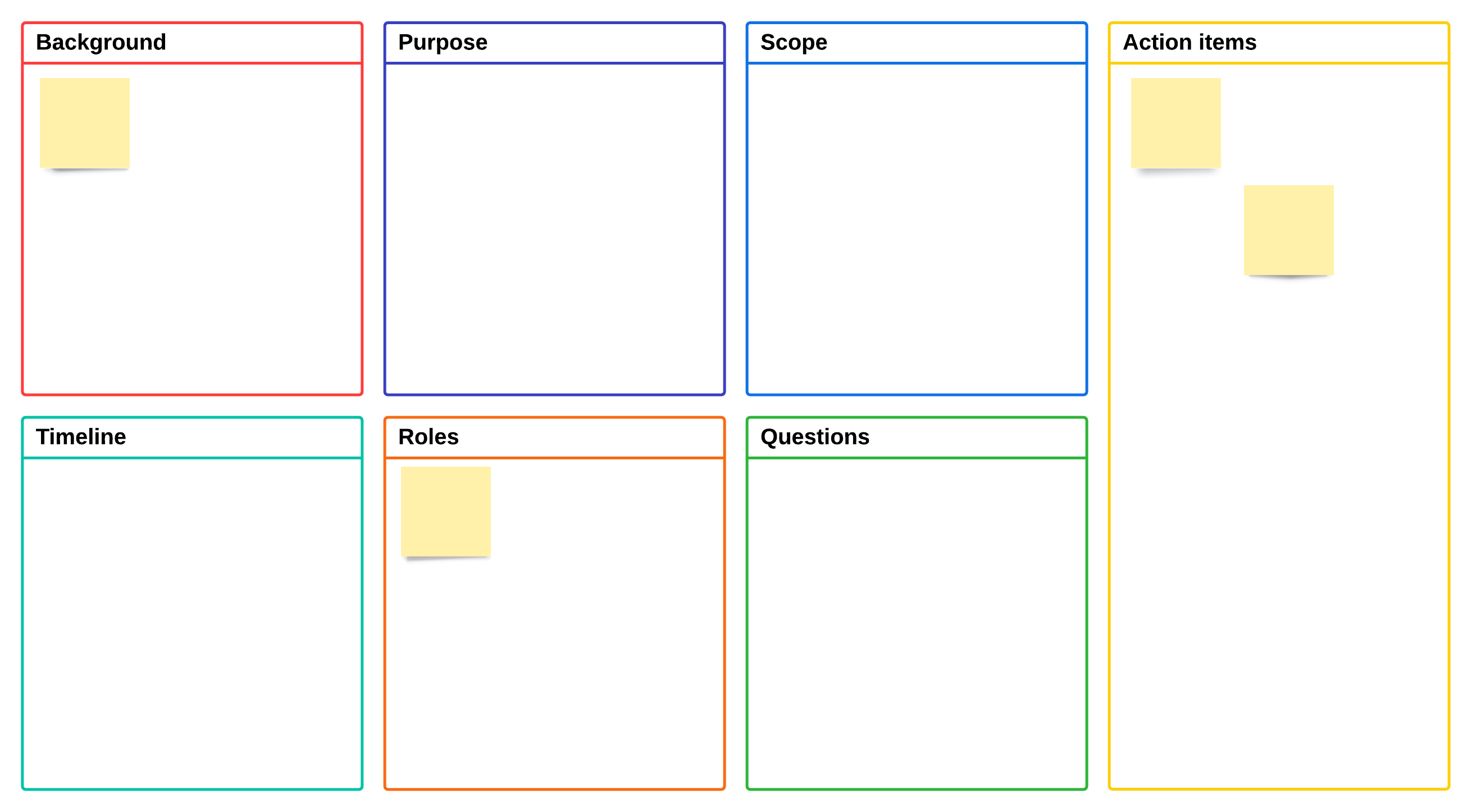
Feedback templates
Getting formalized feedback on what went well, what didn’t go well, and what things can be improved in the next round of product (or process) development can’t be overlooked.
A retrospective promotes team collaboration throughout the feedback loop because it allows you to assess the effectiveness of processes, meetings, and initiatives together. Some of the direct benefits of using the quick retrospective template are:
- The way it provides everyone an equal voice to express ideas and offer feedback
- How it emphasizes prompt feedback and the continuous improvement mindset
- Its ability to establish a safe space for sharing positive and constructive criticism
The core elements that comprise the Lucidspark quick retrospective template include:
- What was good?
- What was bad?
- Ideas
- Action items
The action items are what will set the team on the right path for the next project sprint.
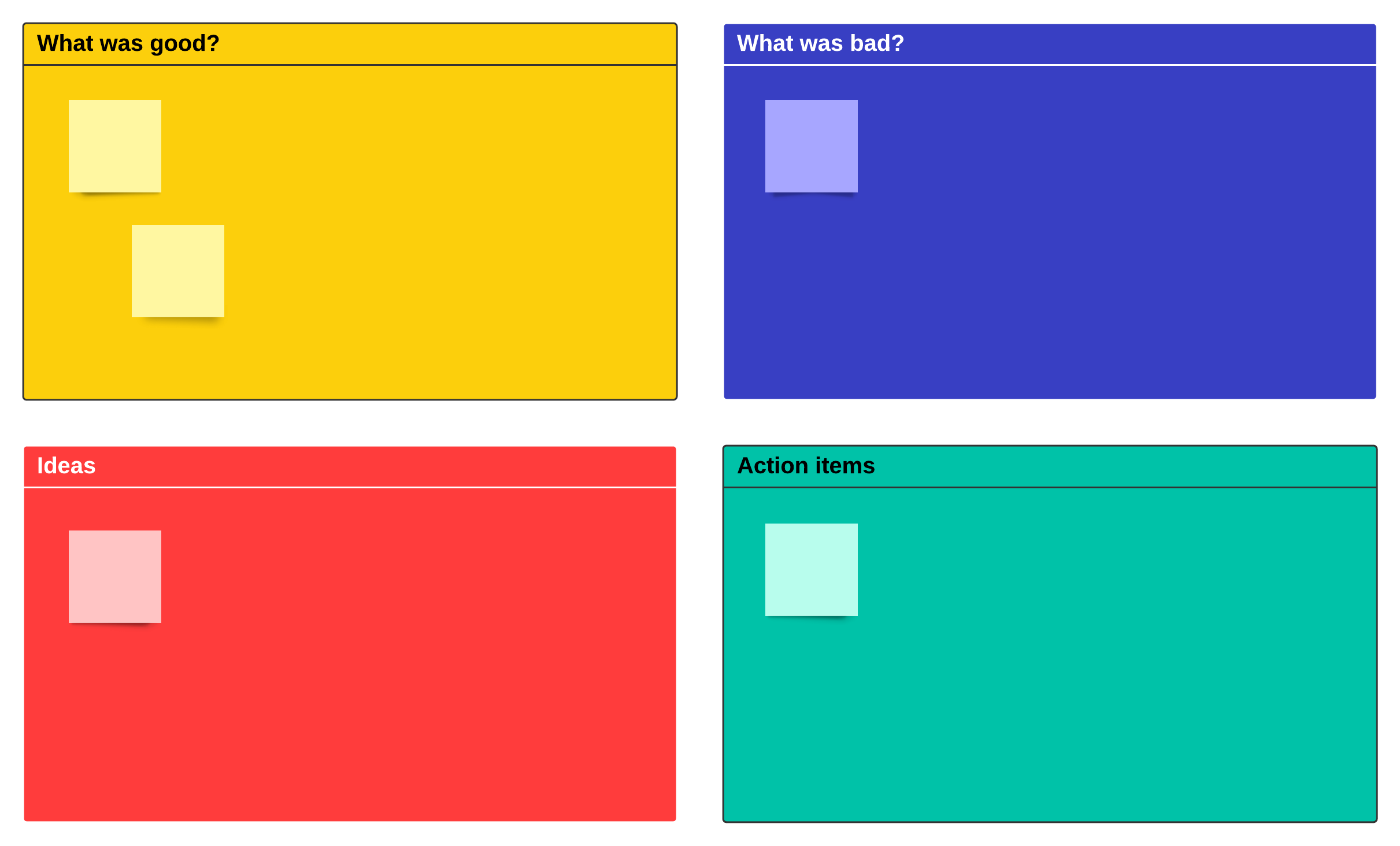
For a different means of acquiring feedback and fostering team collaboration, there’s a tried-and-true brainstorming format that is also a Lucidspark collaboration template.
It’s the start, stop, continue method. Essentially, it’s a focused brainstorming exercise where people talk about what activities they want to start doing, what they want to stop doing, and what they want to continue doing to make improvements in the next phase.
The framework for Lucidspark’s start, stop, continue template is simple:
- Start: What activities do we want to start doing that we are not currently doing?
- Stop: What activities do not add value and should be stopped?
- Continue: What activities are working and should be continued?
The more team members who participate will help ensure more effective collaboration.
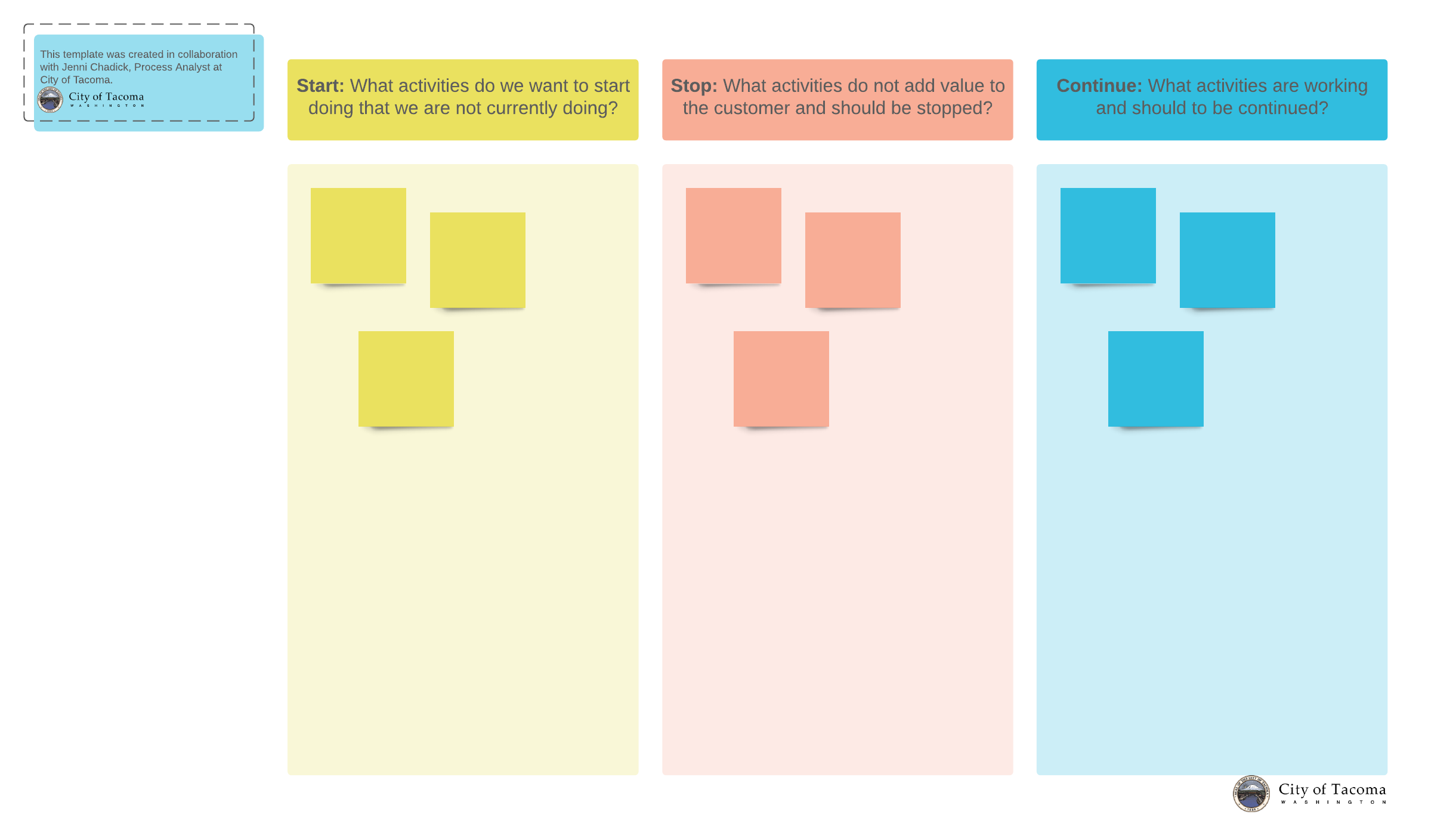
Of course, the only way to help ensure that any collaboration template will lead to more effective collaboration on your team is to start trying it out! Get started with Lucidspark.

Try these templates and hundreds more, when you sign up for Lucidspark.
Sign up nowAbout Lucidspark
Lucidspark, a cloud-based virtual whiteboard, is a core component of Lucid Software's Visual Collaboration Suite. This cutting-edge digital canvas brings teams together to brainstorm, collaborate, and consolidate collective thinking into actionable next steps—all in real time. Lucid is proud to serve top businesses around the world, including customers such as Google, GE, and NBC Universal, and 99% of the Fortune 500. Lucid partners with industry leaders, including Google, Atlassian, and Microsoft. Since its founding, Lucid has received numerous awards for its products, business, and workplace culture. For more information, visit lucidspark.com.
Related articles
Strategies for creating impactful collaboration practices
Let's explore a few strategies and collaboration best practices that improve the way work happens at your organization.
Agile self-organizing teams: What they are and why they work
In this article, we’ll highlight the benefits and challenges of Agile self-organizing teams and outline how Scrum teams and Agile leadership can help self-organizing teams succeed.
How to facilitate effective kickoff meetings
This blog post will go over tips and best practices for project managers to run an effective kickoff meeting.
